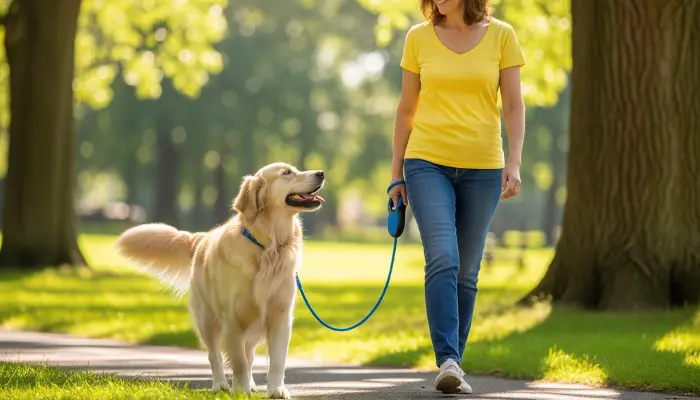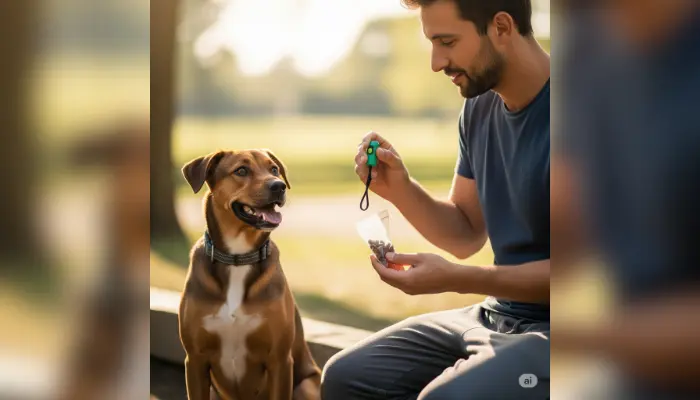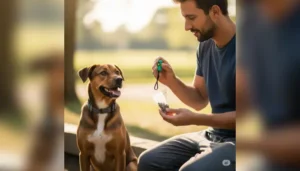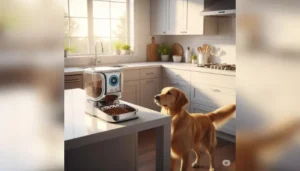Discover professional dog training techniques that transform behavior. Learn positive reinforcement, leash training, and more for happy, well-behaved dogs.
Training your dog doesn’t have to feel overwhelming. In fact, learning a few professional dog training techniques can make everything simpler, smoother, and a lot more fun. Whether you have a bouncy puppy or an older dog stuck in their ways, these techniques can help you build an amazing bond while teaching good habits that last.
Let’s dive into the top tips that make professional dog training techniques so effective.
1. Positive Reinforcement: The Heart of Professional Dog Training Techniques
The first thing to know about professional dog training techniques is that rewards always work better than punishment. Positive reinforcement means you celebrate every little win with your dog. Use treats, toys, or a cheerful “Good job!” whenever your dog does what you ask.
Consistency is key. Keep using the same rewards so your dog understands exactly what earns praise. Skip yelling or scolding—it only confuses your pup and slows progress.
Explore more about positive reinforcement on sites like American Kennel Club.
2. Clicker Training: Make Communication Crystal Clear

Another one of the most popular professional dog training techniques is clicker training. A clicker is a tiny device that makes a sharp sound to mark the moment your dog gets it right.
Start by pairing the click sound with treats. Then, when teaching commands like “sit,” click the instant your dog’s bottom touches the floor. This precision helps dogs learn faster because they know exactly which action earned the reward.
3. Shaping Behavior Step by Step
Sometimes, big commands need to be broken down. Shaping behavior means rewarding small steps toward a bigger goal.
If you’re teaching “lie down,” first reward your dog for sitting. Next, wait for them to lower their head—click and treat. Gradually, you’ll build up to the full action. This patient approach is one of the most effective professional dog training techniques out there.
4. Leash Training for Stress-Free Walks
Is your dog dragging you down the street? You’re not alone. Leash training is essential for a calm, enjoyable walk.
Here’s a simple formula: stop when your dog pulls, walk when the leash is loose. Reward them for staying by your side. Over time, this teaches your dog that pulling gets them nowhere.
For more leash training inspiration, check out ASPCA’s guide.
5. Solving Common Behavior Problems
Dogs sometimes bark nonstop, chew shoes, or act out. Professional dog training techniques can fix these issues.
Redirect bad habits by offering better alternatives. For example, if your dog chews furniture, give them a chew toy instead. If they bark at the door, train them to sit quietly on a mat.
Patience pays off here—remember, every dog can learn.
6. Teaching Impulse Control for Safety
Impulse control sounds fancy, but it’s really about teaching your dog to pause before acting. The “leave it” command is a lifesaver when you drop something dangerous.
Place a treat on the floor, say “leave it,” and reward your dog only when they wait. This builds incredible self-control over time.

7. Socialization: Help Your Dog Feel Confident
Dogs need to meet new people, dogs, and places. Professional dog training techniques include careful socialization so your pup doesn’t get overwhelmed.
Start slow—visit calm environments before heading to crowded parks. Reward relaxed behavior and take breaks if your dog seems stressed.
8. Advanced Training to Challenge Smart Dogs
Once your dog nails the basics, try advanced skills. Off-leash commands, agility games, or scent work all keep dogs engaged and happy.
Professional dog trainers break these skills into small, manageable steps that build confidence and enthusiasm.
9. Why Professional Dog Training Techniques Work So Well
Professional dog training techniques rely on clear communication, positive motivation, and understanding what drives your dog. Dogs love to please—you just have to show them how.
Consistency, patience, and fun are the magic ingredients.
10. Ready to Try Professional Dog Training Techniques Yourself?
If you’re excited to see what your dog can do, there’s no better time to start. These professional dog training techniques can turn chaos into calm and make your bond stronger than ever.
Want more tips and ideas? Check out other posts here and discover a world of training resources.




